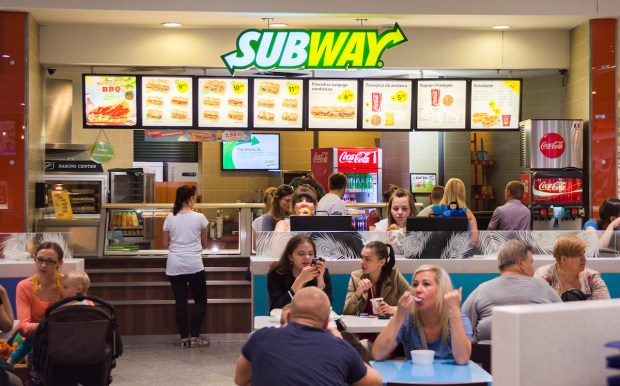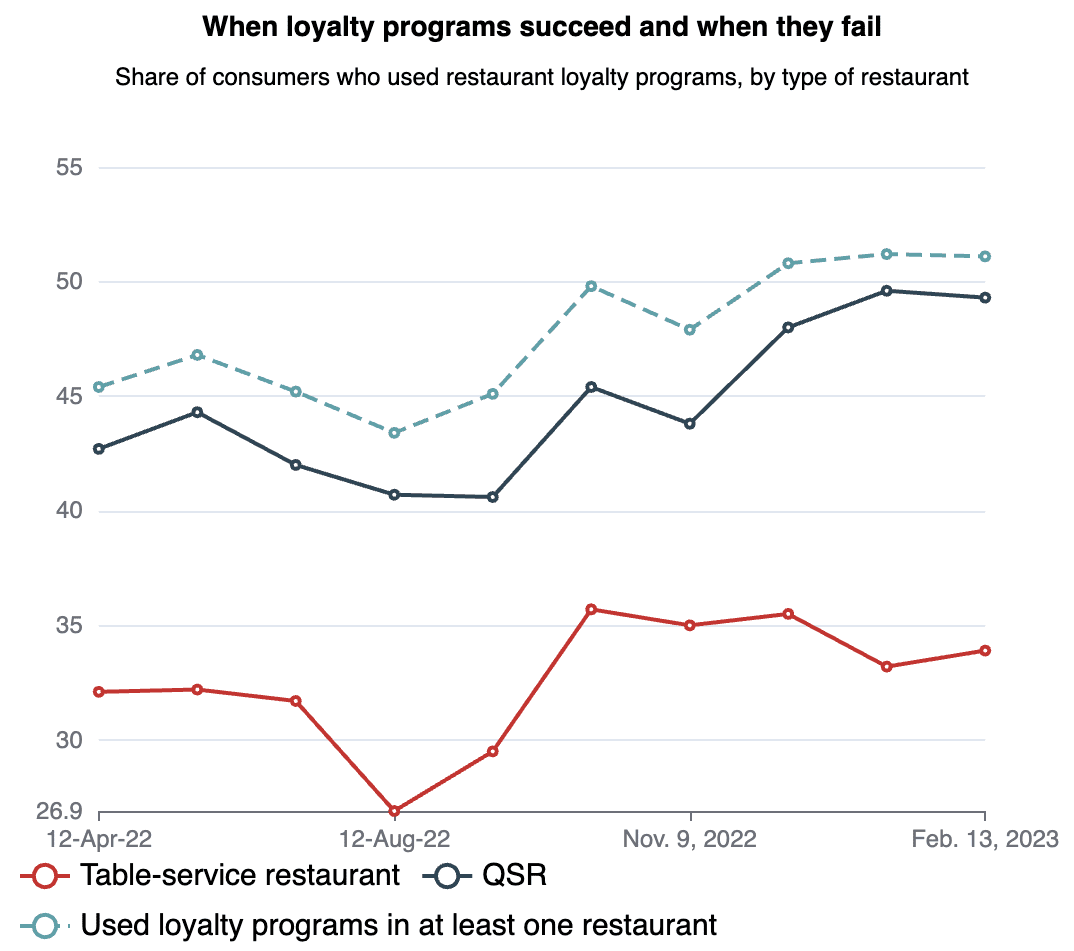
As ongoing financial challenges have continued to constrain consumers’ budgets throughout the year, restaurants have taken the opportunity to rethink the financial incentives they offer, relaunching their rewards programs with new strategies and user experiences.
Take, for instance, quick-service restaurant (QSR) giant Subway, which turned to a tiered rewards model. In September, the brand announced the launch of an updated loyalty program, MVP Rewards, in the United States and Canada, with three different status tiers. The discounts increase as consumers spend more, with the three rungs comprised of those who spend less than $200 per year, those who spend more, and those who spend more than $400 per year.
Also in September, major QSR chain Domino’s Pizza relaunched its rewards program, a move that came on the heels of the brand finally partnering with third-party aggregators to keep consumers engaged with direct ordering channels. As many restaurant brands have made rewards harder to earn during this period of economic challenges, Domino’s touted the ease of point redemption as a key competitive advantage.
“At a time when most brands are scaling back their loyalty programs and making it more difficult to earn and redeem points, Domino’s is doing the opposite,” Mark Messing, the restaurant’s vice president of digital experience and loyalty, said in a statement at the time. “We want to make it easier to reward our customers and give them more options so they can get rewarded faster.”
Overall, most consumers participate in restaurant loyalty programs, but only just. According to the PYMNTS Intelligence study “Connected Dining: Consumers Like the Taste of Discount Meals,” based on a February survey of more than 1,800 U.S. consumers, 51% reported using a restaurant loyalty program, with 49% participating in these programs at QSRs and 34% at full-service restaurants (FSRs).

Other chains’ loyalty relaunches took a challenges-based gamified approach, offering rewards in exchange for consumers’ completion of certain types of purchases. For instance, fast-casual brand Sweetgreen’s loyalty relaunch in April combined its Rewards and Challenges option, available at no cost, with its paid Sweetpass+ subscription, through which members pay $10 a month for up to one daily $3 discount on their purchase.
In an interview with PYMNTS posted in May, Sweetgreen Chief Marketing Officer Daniel Shlossman discussed the thinking behind this loyalty model.
“We have really seen some of the negatives of what very basic points-based programs can do, where a year down the line, when consumers are too rich in terms of their rewards, those restaurants have to degrade the program value, and you’ve seen customer backlash,” Shlossman said, highlighting Starbucks as an example. “The rewards and challenges mechanism gives us that ability to really target different offers to different types of customers.”
Additionally, casual dining brand Denny’s, a diner chain with nearly 1,600 locations around the world, announced the relaunch of its rewards program over the summer as well, leveraging a similar challenges-based model to motivate behaviors based on data about consumers’ purchasing history.
Through the program, the brand offers different tasks for different kinds of customers, nudging different kinds of customers into the next loyalty tier up — turning occasional diners into fans, fans into super fans, etc.
Plus, back in January, Jimmy John’s, a sandwich giant with more than 2,600 locations, announced its own gamified loyalty relaunch. These models enable brands to be more deliberate in how they incentivize consumers.
“You don’t just want your paid members to be folks who are already visiting three, four or five times a month,” Shlossman added in the same conversation. “If you’re doing that, and they don’t increase their frequency, you’re just basically discounting for the sake of discounting.”